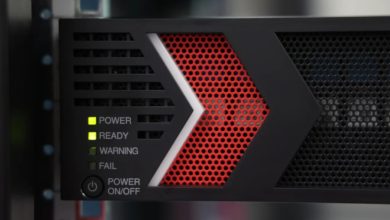Growth at Any Cost, Or a Green Growth Revolution?

When we talk about data centres, the first thing that comes to mind is power. A LOT of power.
Data centres consume staggering amounts of energy, dwarfing the energy usage of commercial office buildings by 10 to 50 times per floor space.
Their voracious appetite for power raises significant concerns about environmental sustainability, and with climate change looming as a pressing global challenge, stakeholders ranging from governments and regulatory agencies to residents and nonprofit organisations are increasingly scrutinising the environmental impact of data centres. Recognising this growing concern, operators are taking proactive steps to mitigate their energy consumption and enhance sustainability measures.
This concern comes at a time when data centre demand is skyrocketing. In 2016, we entered the “Zettabyte Era,” with global internet traffic reaching a staggering one trillion gigabytes. By 2023, monthly traffic is expected to surpass 150 billion gigabytes, fuelled by the explosion of connected devices.
Data centre operators, therefore, are walking on a tightrope. They now must address the ever-growing demand for data storage and processing while simultaneously reducing their environmental footprint. To achieve this, they are implementing various strategies to improve sustainability. However, these efforts require careful consideration of power consumption patterns, exploration of clean energy sources, and the development of effective power management strategies.
But what if sustainability wasn’t just a box to tick, but a weapon you can wield?
 Felix Berndt, Director of Sales – Asia Pacific at Paessler, shared his insights on a crucial shift in perspective where, in a recent interview with Data and Storage ASEAN, he argues that APAC data centres have a golden opportunity to transform sustainability from a cost burden into a strategic advantage.
Felix Berndt, Director of Sales – Asia Pacific at Paessler, shared his insights on a crucial shift in perspective where, in a recent interview with Data and Storage ASEAN, he argues that APAC data centres have a golden opportunity to transform sustainability from a cost burden into a strategic advantage.
The Sustainability Blind Spot
Felix quoted a report by Paessler, which reveals a concerning statistic that 54% of Asia Pacific data centres lack the ability to balance Environmental, Social, and Governance (ESG) targets with their growth goals. This short-term focus misses a crucial point: sustainability can be a powerful differentiator, setting companies apart from competitors who prioritise profit over environmental responsibility.
“A fundamental issue that is ignored by a vast majority of businesses in APAC is that sustainability and digital transformation, the leading value driver for businesses today, are viewed in silos,” says Felix.
He argues that digital transformation and sustainability are not rivals but rather complementary forces. “Digital transformation can actually be a powerful tool for sustainability,” he emphasises. By creating efficiency and reducing environmental impact through innovative business models, digital transformation paves the way for a greener future. Imagine cloud-based solutions eliminating the need for physical servers and their hefty energy demands. Or consider Artificial Intelligence (AI) for automating tasks and optimising resource utilisation within data centres. These are just a few examples of how digital transformation, when strategically aligned with sustainability goals, can lead to significant environmental benefits.
Sustainability as Part of the Digital Puzzle
“Building a robust IT strategy, a digital transformation strategy, and developing sustainability frameworks are all part of the same puzzle,” Felix emphasised. With advancements in AI, machine learning, and data analytics driving ever-increasing data volumes in APAC, data centres are becoming mission-critical for operational excellence. This, however, translates to potentially higher energy consumption.
So, how can data centres reconcile these opposing forces? The Director of Sales, Asia Pacific for Paessler, highlights the importance of a strong IT monitoring backbone. “An effective IT monitoring backbone is crucial to keep sustainability in the mix,” he states.
These monitoring tools play a vital role in resource optimisation. By monitoring IT, Operational Technology (OT), and Internet of Things (IoT) infrastructure in real-time, data centres can identify and address inefficiencies that lead to higher energy use and emissions.
Imagine a data centre where all devices, systems, applications, traffic, and servers are constantly monitored. This real-time data allows operators to ensure alignment between sustainability goals and the overall digital transformation strategy. “Real-time monitoring… ensures that all the components of an ideal sustainable business are well integrated with the overarching digital transformation strategy,” said Felix.
This holistic approach helps achieve long-term operational excellence, reduces environmental impact, and improves ESG benchmarks – a win for both the environment and the data centre’s bottom line.
The key to achieving such “observability,” Felix emphasises, lies in having deep insights into the data centre’s entire IT landscape: “Monitoring data acts as a map – observability guides you through complexities, aiding informed decisions for your infrastructure’s needs and development.”
By seamlessly integrating sustainability practices from the ground level of digital transformation, data centres in APAC can ensure efficiency, scalability, and a greener future.
Seeing is Believing
Data centres in the APAC face the dual challenge of optimising performance and minimising their environmental footprint. While comprehensive IT monitoring may seem like a technicality, Felix Berndt argues that it’s a powerful tool that tackles both these issues simultaneously.
“Comprehensive IT monitoring in data centres is critical to optimise performance and identify energy-saving measures,” says Felix. Here’s how data centres in APAC are leveraging these insights for a greener future:
One key area where IT monitoring shines is temperature control. Traditional methods rely on pre-set cooling levels, which can lead to over-cooling and wasted energy. “Real-time monitoring enables adjustments to cooling systems based on actual heat loads,” Felix explains. This allows data centres to maintain optimal operating temperatures while eliminating unnecessary cooling. Imagine a data centre that can precisely adjust its cooling systems based on real-time heat generated by servers – this translates to significant energy savings without compromising performance.
Data centres are complex ecosystems with numerous resources at play. IT monitoring goes beyond just temperature; it allows operators to identify and address bottlenecks within this ecosystem. “With real-time monitoring, data centre operators are able to identify and address bottlenecks and optimise resource allocation,” says Felix.
Here is how this translates to an environmental benefit: imagine underutilised servers running in the background, consuming energy without contributing to the workload. By using IT monitoring tools, data centres can identify these underutilised resources and take action. This could involve powering them down or consolidating them onto more efficient servers, resulting in a significant reduction in energy consumption.
The beauty of IT monitoring lies in its ability to deliver both performance optimisation and energy savings. By having real-time insights into their entire IT infrastructure, data centres in APAC can make data-driven decisions that benefit both their bottom line and the environment. This paves the way for a future where data centres can be powerful engines of growth without leaving a heavy ecological footprint.
Emerging Technologies for a Greener Future
Sustainability is not just about the present. It needs to be sustainable for years to come, be it for the next five or even 50 years.
With sustainability emerging as one of the top priorities for organisations across the region for the foreseeable future, according to the aforementioned report, Felix anticipates a surge of innovative technologies within the green movement. He notes that this shift in focus towards going green is mainly driven by factors such as ESG audits and reports, which require companies to be transparent about their environmental impact.
Felix said that in the future, data centres will increasingly rely on comprehensive IT monitoring to navigate this new landscape. “IT monitoring will enable organisations to gain insights into resource consumption, assess the benefits derived, and identify opportunities for reduction,” he explains.
This “observability” empowers data centres to make data-driven decisions that optimise performance while minimising their environmental footprint.




